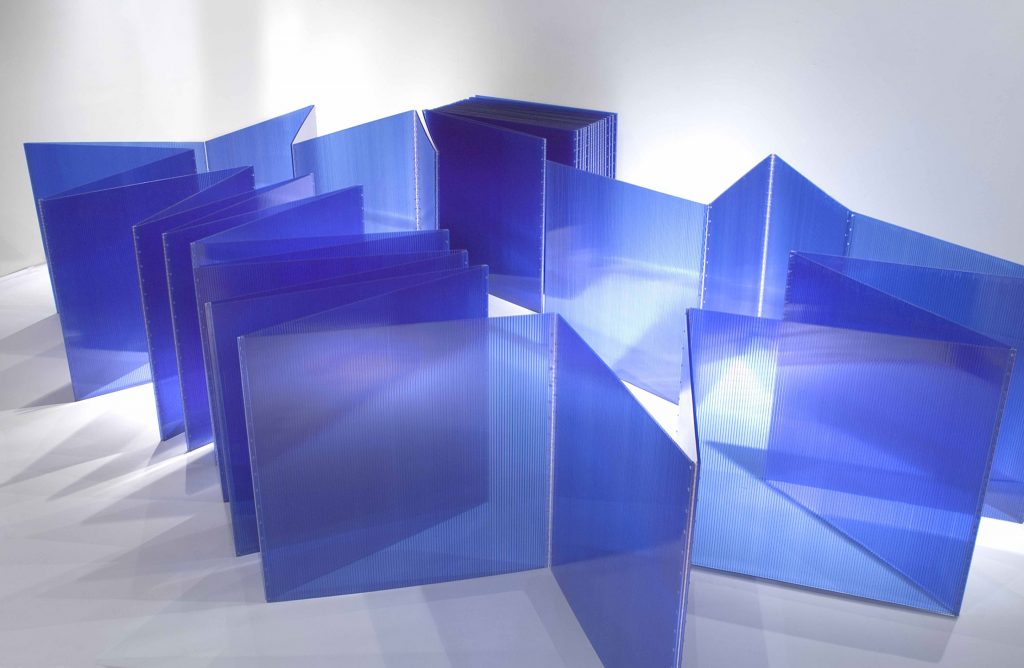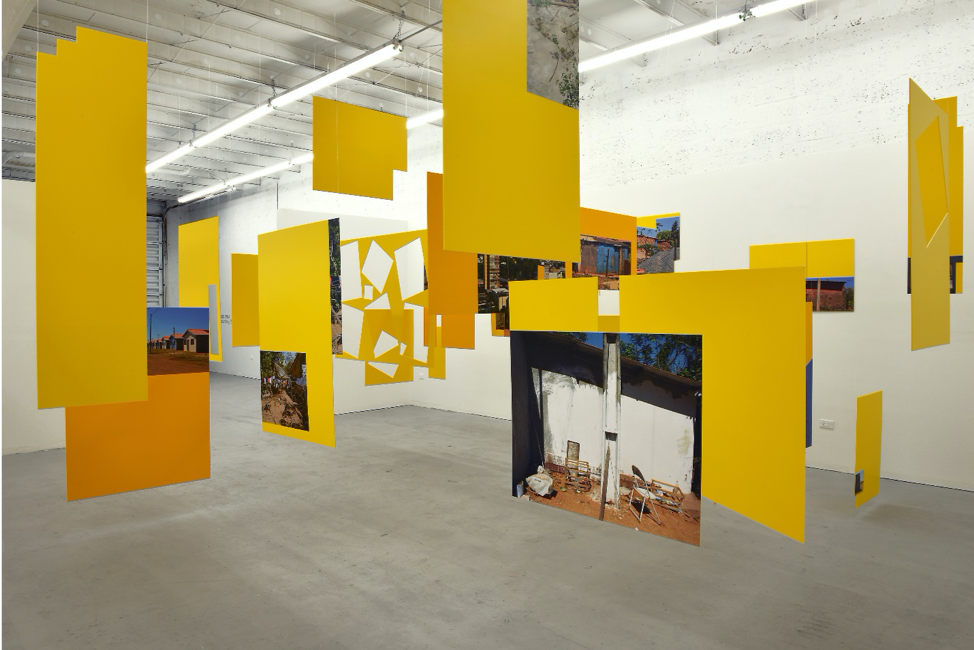Groundbreaking exhibition at Phoenix Art Museum to feature artworks from major gift of contemporary Latin American art

Sep, 10, 2020
Exhibitions and Special InstallationsModern and Contemporary ArtLatin American ArtSpecial Engagement Exhibitions
Groundbreaking exhibition at Phoenix Art Museum to feature artworks from major gift of contemporary Latin American art
Stories of Abstraction: Contemporary Latin American Art in the Global Context presents rarely seen examples of Latin American abstraction alongside works by American and European modernists and Phoenix-based contemporary artists

PHOENIX (September 10, 2020) – Stories of Abstraction: Contemporary Latin American Art in the Global Context at Phoenix Art Museum will present for the first time more than 40 recently acquired works of contemporary Latin American art in conversation with those by 30 European and American artists, including four currently working in Phoenix. The new exhibition explores how the visual language of abstraction has generated profound insights into Latin American culture and politics and how Latin American artists have drawn on abstraction’s parallel history in the United States and Europe. By providing an overview of post-1990s abstraction from various geographies in Latin America, the exhibition examines how abstraction is employed in contemporary Latin American art to convey specific emotions, stories, and ideas stemming from the cultural and political zeitgeist, while addressing the multitude of ways in which artwork lacking figuration or recognizable characters can generate new narratives, insightful commentary, and even political change. Stories of Abstraction will be on view at Phoenix Art Museum from October 1, 2020 through January 31, 2021.
“Stories of Abstraction seeks to uncover how Latin American artists have used abstraction as both a vehicle to explore key issues relating to society and a tool to recast sometimes radical civic discourse,” said Gilbert Vicario, the Museum’s Deputy Director for Curatorial Affairs and the Selig Family Chief Curator who curated the exhibition. “The title of the exhibition intends to make clear that there are complex narratives within these abstract works that connect Latin America to the rest of the world. Abstraction in Latin America didn’t develop independently; rather its genesis is inextricably tied to the region’s history of colonialism, a relationship that is visually evident through formal and conceptual frameworks. This exhibition also furthers the Museum’s dedication to preserving and presenting significant works by Latin American artists, as well as its commitment to developing original scholarship that examines the meaning and underpinnings of abstract Latin American art. As our Phoenix community is more than 40% Latinx, Stories of Abstraction offers a timely examination of the visual language of Latin American abstraction that we believe our visitors can relate to and find inspiring and exciting.”
The exhibition also celebrates a 2018 gift to Phoenix Art Museum of 112 contemporary Latin American artworks, including paintings, sculptures, installations, and works on paper, from Nicholas Pardon, co-founder of the former SPACE Collection—the largest collection of post-1990s abstract Latin American art in the United States. Featuring artwork from the landmark gift, which increased the Museum’s holdings of contemporary Latin American art by nearly 300%, Stories of Abstraction makes accessible a wide range of compelling artwork from Venezuela, Mexico, Peru, Argentina, Colombia, Brazil, Honduras, and Guatemala by 25 of the most innovative artists working in Latin America in recent years and today, including seven women artists, thus opening a window onto how abstraction is used to visualize the social philosophies of the present.
To historically contextualize the exhibition’s contemporary Latin American artworks from Pardon’s recent gift, Stories of Abstraction incorporates works by an earlier generation of artists from the Americas and around the world to substantiate their influence on post-1990 Latin American abstractionists. These works, by seminal artists like Alexander Calder, Pedro Friedeberg, Agnes Martin, Carlos Mérida, Hélio Oiticica, Frank Stella, Bridget Riley, and Jesús Rafael Soto, create historical touch points demonstrating how formal threads become appropriated, reworked, and reimagined in the post-1990 Latin American landscape.
Artworks by contemporary U.S. artists working in abstraction, including those based in Phoenix, further expand the conversation around abstraction to illuminate how these tendencies continue to develop and unfold in a global context. Locally based artists featured in Stories of Abstraction include Argentine sculptor and light and fire artist Geny Dignac, abstract and conceptual artist Matt Magee, photographer and performance artist Liz Cohen, and internationally renowned artist and sculptor Rotraut Klein-Moquay.
“By including works by Phoenix-based artists, Stories of Abstraction will help audiences trace the evolution of abstraction to the present day and illuminate its importance as a visual language that is currently being employed within our local art community through various media,” Vicario said. “Each artist uses abstraction in surprisingly different ways to elicit emotional and spiritual transcendence toward singular ends.”
Key highlights from the exhibition include:
- Honduran artist Adán Vallecillo’s Pantones (2013), in which six hanging banners made of moto-taxi covers are placed in dialogue with each other. The work highlights the use of non-traditional materials in Latin American abstraction and encourages viewers to engage with and walk along its stratified banners to examine the visual continuities and obscurities between each layer.
- Colombian artist Gabriel Sierra’s Sin título (siete conejos) (2001-2013), a sculptural installation consisting of glue and straw bricks arranged in descending scale that continues the artist’s exploration of the languages of design and architecture. Sierra uses straw as a vernacular material for construction to signify humans’ modification of nature and adaptation to the environment, engaging ideas of community, habitat, and urbanism and examining the forces that govern human interaction with built environments.
- Argentinian artist Sergio Vega’s Shanty Nucleus After Derrida 2 (2011-2013), which presents yellow monochrome planes suspended in space to create an array of configurations and walkways that enable an interactive viewing experience. These various planes constitute the color ground on which photographs of “shanty” homes have been mounted to create fragmented sculptural formations inspired by Derrida’s theory of deconstruction.
- American artist Louise Nevelson’s Royal Tide V (1960), a sculptural work made with discarded pieces of wood that features abstract compositions framed within gridded structures. Nevelson’s imposing and often monotone wooden sculptures are commonly referenced in relation to artistic tropes such as Abstract Expressionism and assemblage and bear a strong resemblance, albeit in three dimensional space, to the work of Joaquin Torres-Garcia and his School of the South.
- American artist Alexander Calder’s Constellation with Orange Anvil (1960), which is rendered in painted sheet metal and wire. From the artist’s Constellations series, the work demonstrates Calder’s deep interest in cosmology, evoking the movements and pure forms of the planets. Its biomorphic forms also reference works by Joan Miró, Yves Tanguy, and Jean Arp.
- Him (2015-16) by American artist Liz Cohen, who is based and works in Phoenix. In this work, the wool and silk from Loja Saarinen’s weavings meet the walnut from an Eames chair, an example of mid-century modern furniture. Him marries abstraction with image making and the artist’s interest in representing the difficulties of radical self-expression.
- American artist Matt Magee’s Xantrion (2013), which reflects his signature use of repetition. Magee, who is also based in Phoenix, draws inspiration from Agnes Martin, and his work combining geometry, the grid, science, and nature with a random poetic sense references both an interior and intuitive language rooted in the objective and experiential.
- Stella Stella (1968) by Phoenix-based artist Geny Dignac, a neon piece exploring color perception and movement. Born in Buenos Aires in 1932, Dignac was exposed in the 1950s to the artistic vanguard of Latin America that sought to create concrete, non-objective art. Her kinetic light sculptures, which have ultimately led to a radical rethinking of fire as an artistic medium, carry on the principles of artists such as Gyula Kosice.
“Stories of Abstraction places the Museum at the forefront of conversations surrounding scholarship, exhibition practices, and the global significance of contemporary Latin American art,” said Vicario. “The exhibition will foster new dialogues in the Phoenix community and beyond and provide the opportunity to learn about the significant achievements of Latin America’s foremost abstract artists.”

About the Exhibition
Stories of Abstraction: Contemporary Latin American Art in the Global Context will be on view from October 1, 2020 through January 31, 2021 in Steele Gallery. It is organized by Phoenix Art Museum and made possible through the generosity of the Museum’s Circles of Support and Museum Members. The exhibition features objects donated to the Phoenix Art Museum collection by Nicholas Pardon.
This special-engagement exhibition is free for Museum Members; veterans and active-duty military and their families; Maricopa Community College students (with ID); and youth aged 5 and younger. For a full breakdown of general-admission prices, visit phxart.org/visit/.
All special-engagement exhibitions are included with general admission. During voluntary-donation times when general admission is pay what you wish, admission to Stories of Abstraction is $5. For a full breakdown of general-admission prices and hours, please see phxart.org/visit/.
To request interviews and high-resolution photography, contact the Communications Office of Phoenix Art Museum at 602.307.2003 or samantha.andreacchi@phxart.org.
Download Media Images and Credit Lines
About Phoenix Art Museum
Since 1959, Phoenix Art Museum has provided millions of guests with access to world-class art and experiences in an effort to ignite imaginations, create meaningful connections, and serve as a brave space for all people who wish to experience the transformative power of art. Located in Phoenix’s Central Corridor, the Museum is a vibrant destination for the visual arts and the largest art museum in the southwestern United States. Each year, more than 300,000 guests engage with critically acclaimed national and international exhibitions and the Museum’s collection of more than 20,000 works of American and Western American, Asian, European, Latin American, modern and contemporary art, and fashion design. The Museum also presents a comprehensive film program, live performances, and educational programs designed for visitors of all ages, along with vibrant photography exhibitions made possible through the Museum’s landmark partnership with the Center for Creative Photography, University of Arizona. To learn more about Phoenix Art Museum, visit phxart.org, or call 602.257.1880.
Categories
- Media Alerts
- Latin American
- European Art
- American and Western American Art
- Fashion Design
- Asian Art
- Modern and Contemporary Art
- Photography
- New Acquisitions
- Collections
- Special Events and Programs
- Board of Trustees and Leadership
- Major Gifts
- Uncategorized
- Special Installations
- Special Engagement Exhibitions
- Latin American Art
- Fashion Design
- European Art
- American and Western American Art
- Asian Art
- Modern and Contemporary Art
- Photography
- Exhibitions and Special Installations
What can we help you find?
Need further assistance?
Please call Visitor Services at 602.257.1880 or email